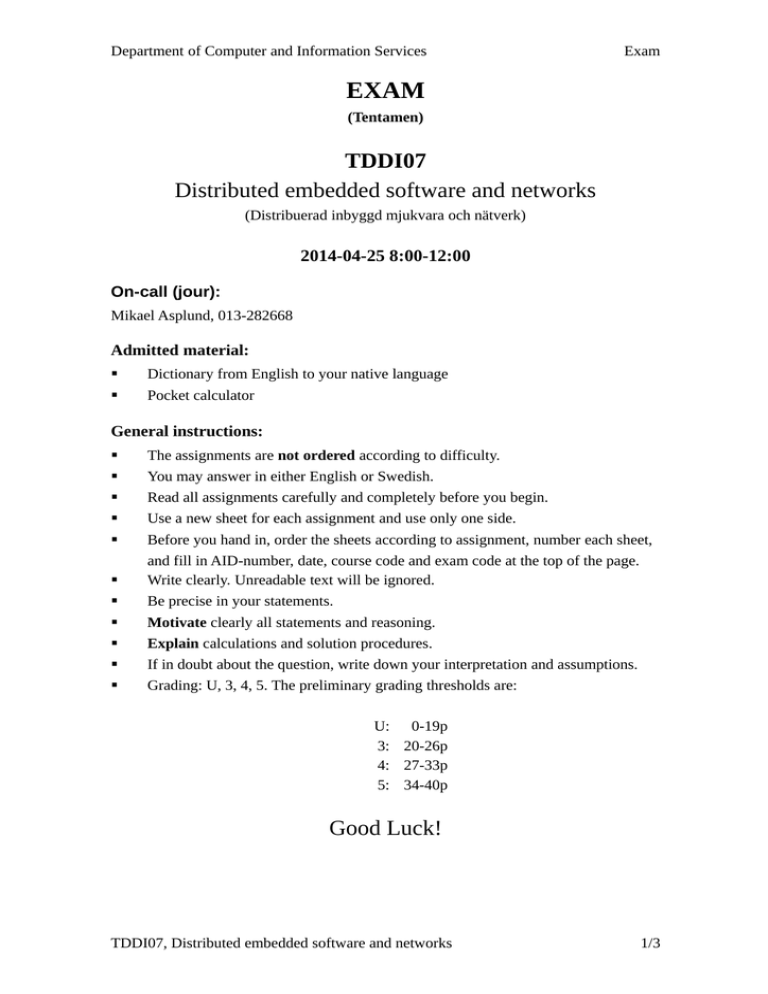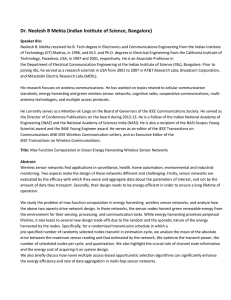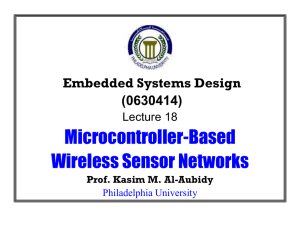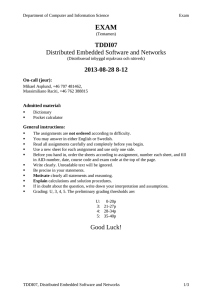EXAM TDDI07 Distributed embedded software and networks 2014-04-25 8:00-12:00
advertisement

Department of Computer and Information Services Exam EXAM (Tentamen) TDDI07 Distributed embedded software and networks (Distribuerad inbyggd mjukvara och nätverk) 2014-04-25 8:00-12:00 On-call (jour): Mikael Asplund, 013-282668 Admitted material: Dictionary from English to your native language Pocket calculator General instructions: The assignments are not ordered according to difficulty. You may answer in either English or Swedish. Read all assignments carefully and completely before you begin. Use a new sheet for each assignment and use only one side. Before you hand in, order the sheets according to assignment, number each sheet, and fill in AID-number, date, course code and exam code at the top of the page. Write clearly. Unreadable text will be ignored. Be precise in your statements. Motivate clearly all statements and reasoning. Explain calculations and solution procedures. If in doubt about the question, write down your interpretation and assumptions. Grading: U, 3, 4, 5. The preliminary grading thresholds are: U: 0-19p 3: 20-26p 4: 27-33p 5: 34-40p Good Luck! TDDI07, Distributed embedded software and networks 1/3 Department of Computer and Information Services Exam 1. System design choices (8p) A manufacturing facility with over 200 machines is being equipped with a monitoring system where each machine will have at least one wireless battery-driven sensor node. The sensor nodes will measure vibrations, temperature, humidity, and will also connect to the diagnostic interface of the machine if such exists. a) A number of wireless technologies are being considered for the sensor nodes. Discuss the pros and cons of centralised/decentralised, scheduled/contention-based, and flat/hierarchical networking solutions in this scenario. You can exemplify with standard technologies such as Wifi, Bluetooth, Zigbee, and cellular M2M. (3p) b) Each sensor node will contain a non-rechargeable 3.6V lithium battery with a capcity of 3600mAh. The power consumption of the different device modes are as follows: ◦ Sleeping: 10μW ◦ Fully idle: 5mW ◦ CPU and sensors active, radio idle: 20mW ◦ Fully active: 70mW Assume that every mode transition are negligible and that the every time the sensor wakes up, it will first measure for 10s and then communicate for 1s. How often can the sensors measure the machine health if the nodes should last at least 10 years? (3p) c) The wireless communication range of the sensor nodes can be tuned by adjusting the transmission power. Comment on the advantages and disadvantages of having a dense (many nodes in range) or sparse (few nodes in range) network topology. (2p) 2. Networking (12p) a) Explain the hidden terminal problem. (2p) b) Over-emitting is a source of enery-inefficiency of MAC protocols. Explain how this phenomeon can occur and what can be done to mitigate it. (3p) c) Explain the roles of PAN coordinator and network device in the 802.11 standard. (2p) d) Describe (in some detail) a protocol of your choice (e.g., rumour routing, GPSR, directed diffusion) for routing data in a flat network. (3p) e) A core mechanism of the CTP protocol is adaptive beaconing. Explain what is meant by this term. (2p) TDDI07, Distributed embedded software and networks 2/3 Department of Computer and Information Services Exam 3. Clock synchronisation and positioning (7p) a) Explain (preferably with the help of a diagram) the concept of a perfect clock. (1p) b) Describe three parts of the critical path in the context of the time taken for a message to go from one node to another in a wireless setting. (3p) c) Explain the concept of multilateration. (2p) d) Explain the concept of scene analysis in the context of positioning. (1p) 4. Resource management (7p) a) Give an example of an wireless sensor application where quality of service requirements must be considered. (1p) b) In token bucket traffic shaping, tokens are generated at a predefined rate (r). Explain how this parameter relates to the resulting data traffic. (1p) c) Explain the main principle of weighted fair queueing (WFQ). (3p) d) Why is it difficult to bound the maximum end-to-end delays in large scale networks? (2p) 5. Dependability and security (6p) a) What is meant by partial synchrony in distributed systems? (2p) b) One of the important properties of a consensus algorithm is validity. Explain this term. (1p) c) Explain the concepts of fault, error, and failure and give an example of a fault-error-failure chain of events. (3p) TDDI07, Distributed embedded software and networks 3/3











